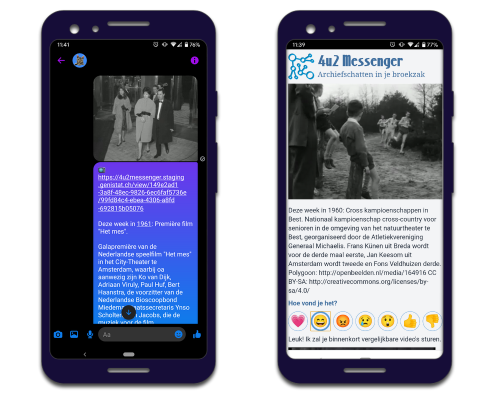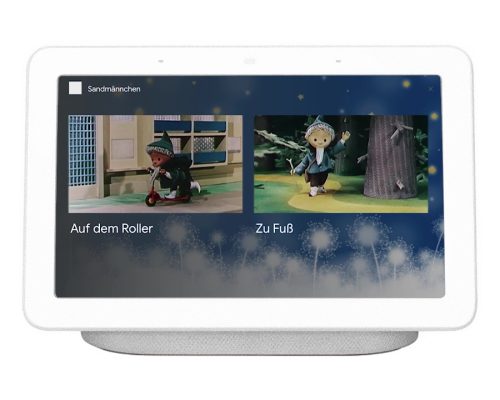ReTV investigates how broadcaster and media archives can harness AI-based recommendation systems and novel content delivery methods to build stronger relationships with their audiences. The result of this – two user applications that cater personalised media content to difference audience segments via channels most convenient to them.
Personalised, AI-driven Content
4u2 Messenger
4u2 Messenger automatically distributes video content via messaging applications such as Facebook Messenger or Telegram. Unlike social media channels that address large audience segments, a messaging application allows organisations to reach individual users and tailor the video offering specifically to them.
With minimal editorial intervention, the Messenger curates and distributes video content based on its relevance at a particular moment in time for each individual user. In order to increase the chances of these videos being seen, the 4u2 Messenger also learns the optimal time to distribute videos based on the users past behaviour.
Users can provide immediate explicit feedback on the received videos via emoji reactions. This feedback feeds the recommendation engine to provide more accurate future recommendations. To leverage the breadth of large-scale media collections, the recommendation engine tries to satisfy the diverse and niche interests of its users with highly related content, but it also introduces a level of serendipity by recommending more unexpected videos that nudge users to explore more diverse topics.

4u2 for Smart Speakers
The second application is an app for the Google Assistant. Since ReTV focuses on video content, it was designed primarily for use with Google Nest Hub, i. e. a smart speaker with display. The app enables users to create their own videos from existing archive material using voice commands.
Its current version is based on the rbb children’s programme ‘Unser Sandmännchen’, which is well known in Germany. It’s a seven minute show, in three short segments. It’s broadcast daily, just before 18:00, and targeted at pre-school children, to send them to bed with an ‘Abendgruß’ (bedtime story).
How it works: Use Case for ‘Abendgruß’
It’s Tuesday, 18:30. Bedtime for four-year-old Paul. But without his daily ‘Abendgruß’ he doesn’t want to go to sleep. It’s too late to watch today’s episode on TV, however, Paul can create his own ‘Abendgruß’ today. Paul and his mom sit down in the comfortable armchair in the living room. On a small table right next to it they have their Google Nest Hub. Paul says the magic words: OK, Google, call ‘Abendgruß’. The Nest Hub then prompts Paul to choose between two options for each segment of the show and in the end Paul’s episode is shown on the display. When the sandman throws his sleeping sand, he also rubs his eyes. Now Paul is ready to sleep.
We decided to use the ‘Sandmännchen’ episodes to develop this use case because of their simple and consistent structure: there is always a frame story, composed of an intro and an outro (Sandmännchen arrives on/leaves a special setting in a special way), and a main story (an adventure with one or more friends). Therefore it is easy to train an AI on it and thus to realise the fully automated process of video adaptation and repurposing. This also includes the ingestion of new episodes as well as video fragmentation & annotation – initiated by voice commands, as described above.

